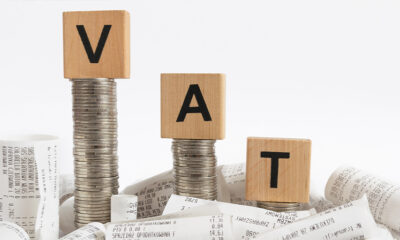Business
South Africans Are Living on the Edge: How a Cancelled VAT Hike Exposed a Fragile Economy

Earlier this year, when whispers of a possible VAT increase made their way into the national conversation, South Africans braced for impact. The proposed 0.5% hike to the value-added tax (VAT) never made it into the final Budget Speech — it was quietly dropped. But for millions of households, the panic had already set in.
The economy may have dodged a tax bullet, but the fallout was real.
What unfolded was a textbook example of how policy uncertainty can ripple through an already strained economy. Consumers, especially in the middle-income bracket, responded to the mere possibility of rising prices by pulling back on spending and leaning more heavily on credit cards. Even without an official tax increase, the damage — psychological and financial — was done.
The Cost of Mixed Signals
In a country where wages have flatlined, unemployment remains high, and the cost of living continues to climb, talk of increased taxes — even in passing — hits a nerve. The response this time wasn’t driven by affordability alone, but by fear of what could come next.
Discretionary spending declined. Households began to prepare for tighter months. And many turned to their credit cards not for luxuries, but for basics: groceries, fuel, school supplies, utilities. The so-called credit cushion that once offered breathing room is now becoming the default financial lifeline for many South Africans.
Credit Is Becoming a Lifeline, Not a Luxury
According to recent data from XDS, the shift is stark. Over the past five years, credit card utilisation in South Africa has jumped 13%, while new credit limits have dropped by 21%. At the same time, the average number of new credit cards issued per month has climbed by 39%. This tells us that more people are borrowing — and borrowing more frequently — to keep up with daily costs.
For many families, credit is no longer a tool for building financial stability. It’s become a survival mechanism.
Policy Jitters Now Mean Real Economic Impact
While VAT increases are not a new concept in South Africa, the intensity of the public response this time reveals something deeper. South African households are financially stretched. And in this climate, even the hint of a policy shift can rattle consumer confidence, stall spending, and increase reliance on debt.
Unfortunately, many financial institutions are still relying on outdated, backward-looking data to assess risk. By the time consumer behaviours shift in reports, the damage is often already done — defaults increase, debt spirals, and households face mounting stress.
Why Real-Time Data and Behavioural Insights Matter
To manage risk in today’s volatile environment, lenders and policymakers must move faster — not only to react, but to anticipate. Real-time insights into credit utilisation, spending behaviour, and consumer sentiment aren’t just useful; they’re essential.
With smarter data analytics and predictive modelling, institutions can catch early warning signs before they turn into defaults. This protects not only lenders but also consumers, enabling timely support for those showing signs of financial strain.
A Lesson We Can’t Afford to Ignore
The VAT increase never materialised, but its ghost lingers. It offered a clear warning: policy uncertainty can have real-world consequences — fast. When a simple proposal causes widespread behavioural change and drives consumers deeper into debt, it’s a sign that the system is too fragile to absorb shocks.
South Africa can’t afford to ignore this wake-up call. The next policy misstep, delay, or reversal might not be so easily walked back — and by then, the damage might not be so easily contained.
{Source: IOL}
Follow Joburg ETC on Facebook, Twitter , TikTok and Instagram
For more News in Johannesburg, visit joburgetc.com


























